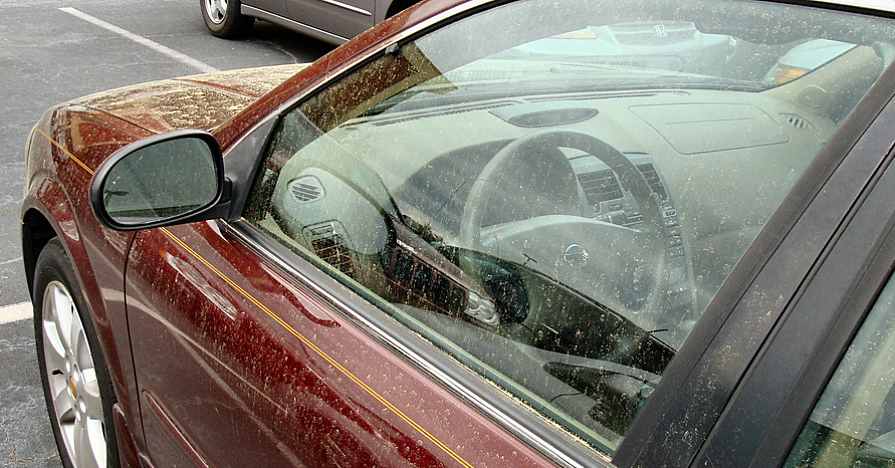
3 Tips for pollen removal and keeping your car clean

With winter becoming a rapidly receding dot in your rear-view mirror, warmer weather brings much needed relief to people and their cars alike. No longer must you deal with frozen door locks, ice-encased windshields or copious amounts of corrosive road salt. Nevertheless, there is a springtime malady that brings its very own kind of misery: tree pollen. Left untreated, pollen can actually corrode the body of your car. Here’s how to go about the task of pollen removal and keep your car pollen-free all season long.
1. PROBLEMATIC POLLEN
Car covered in pollen
In early spring, blooming trees, particularly conifers, release copious amounts of pollen. A greenish-yellow dust settles everywhere along house tops, the ground and everything in between — including on your car.
Pollen itself is not especially harmful. For some people, it makes it harder for them to breathe or causes sneezing — a problem best left to the medical experts. When pollen settles on any surface, it typically stays there until wind or rain removes it. For car owners, though, leaving pollen in place is not just unsightly; it could also damage the paint.
Pollen is considered environmental fallout, along with acid rain, bird droppings, tree sap and decaying insects as threats to material surfaces, including auto finishes. Leaving pollen on your car or waiting for nature to provide assistance does it no good.
2. WASH AND WAX FOR PROTECTION
The easiest solution to pollen buildup is simply to wash your car. Gather your usual materials, car wash cleaner, sponges, rags, microfiber towels and buckets, and start the car washing process.
Connect your hose, turn it on and adjust the nozzle to a normal setting. From the top of the car and down to the sides, wash off every square inch of the vehicle. Next, set the hose aside, add a car wash solution to your bucket, fill it with water and use a heavy duty sponge to go over every surface. Again, start from the top and go to the bottom of the vehicle. Use separate sponges for non-paint surfaces, such as the wheels, chrome and glass.
Dry your car with a clean towel, and apply a car wax solution immediately. However, skip this step if you are in the midst of a pollen storm; you might find yourself rubbing pollen into your car’s finish and damaging the paint. Plan on washing your car again within a few days for pollen removal. Wait for the opportunity to apply car wax when pollen is not flying through the air. Wax may not prevent pollen build up, but it will protect your car’s finish against all types of environmental fallout.
3. POLLEN REMOVAL AND PROTECTION
Certainly, pollen removal is a priority. Waiting for nature to take its course can damage the paint, thereby reducing the value of your car. Ideally, though, you should plan on washing your car and waxing it as soon as winter ends to remove corrosive road salt build up and to provide a level of protection before the spring pollen onslaught returns.
Once tree pollen season eases, you can return to a normal car wash routine. Add in quarterly waxing, and you will retain your car’s sheen and preserve its great looks. You may not be able to prevent pollen accumulation, but by following these pollen removal tips you keep your car looking great.
